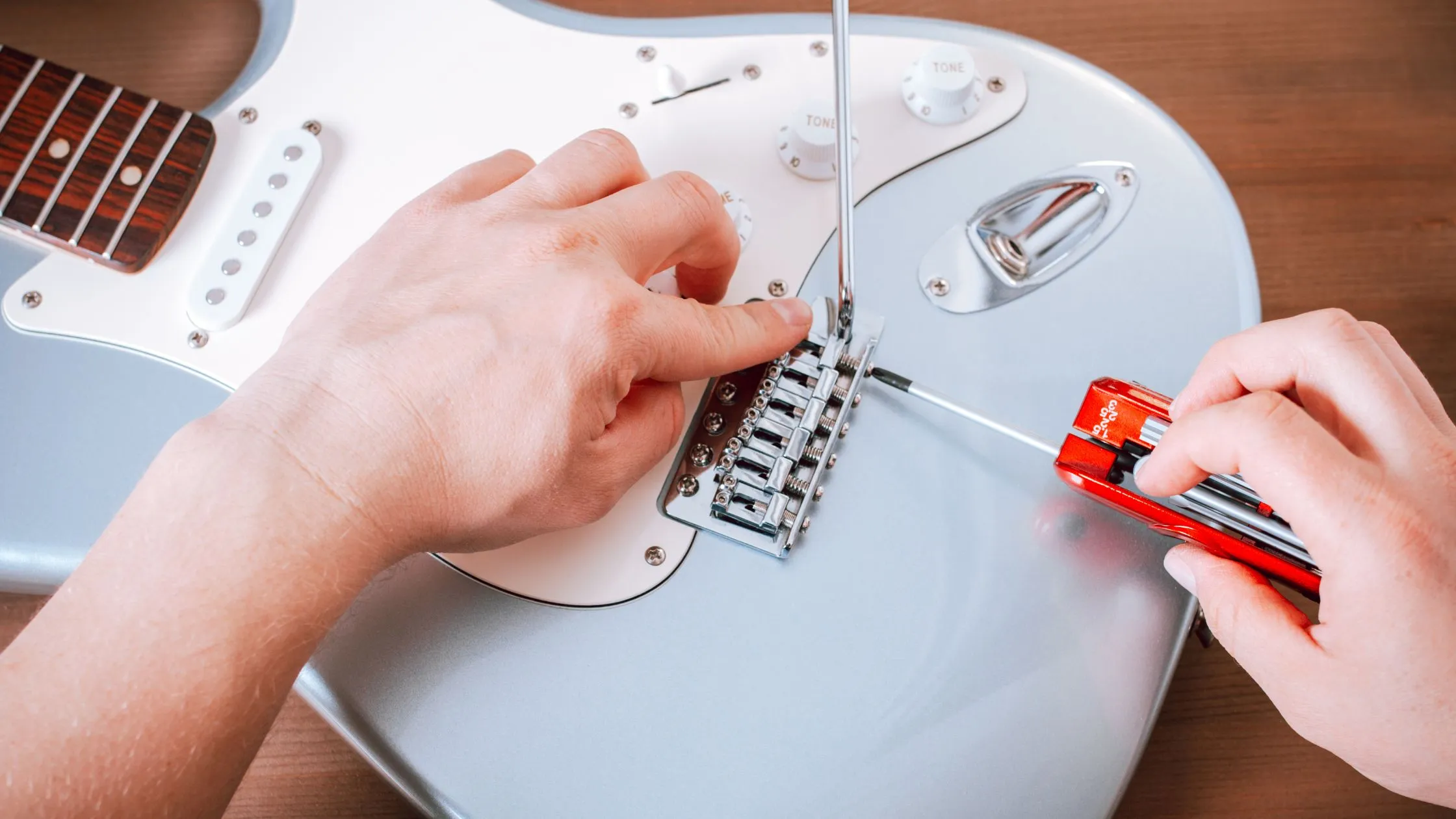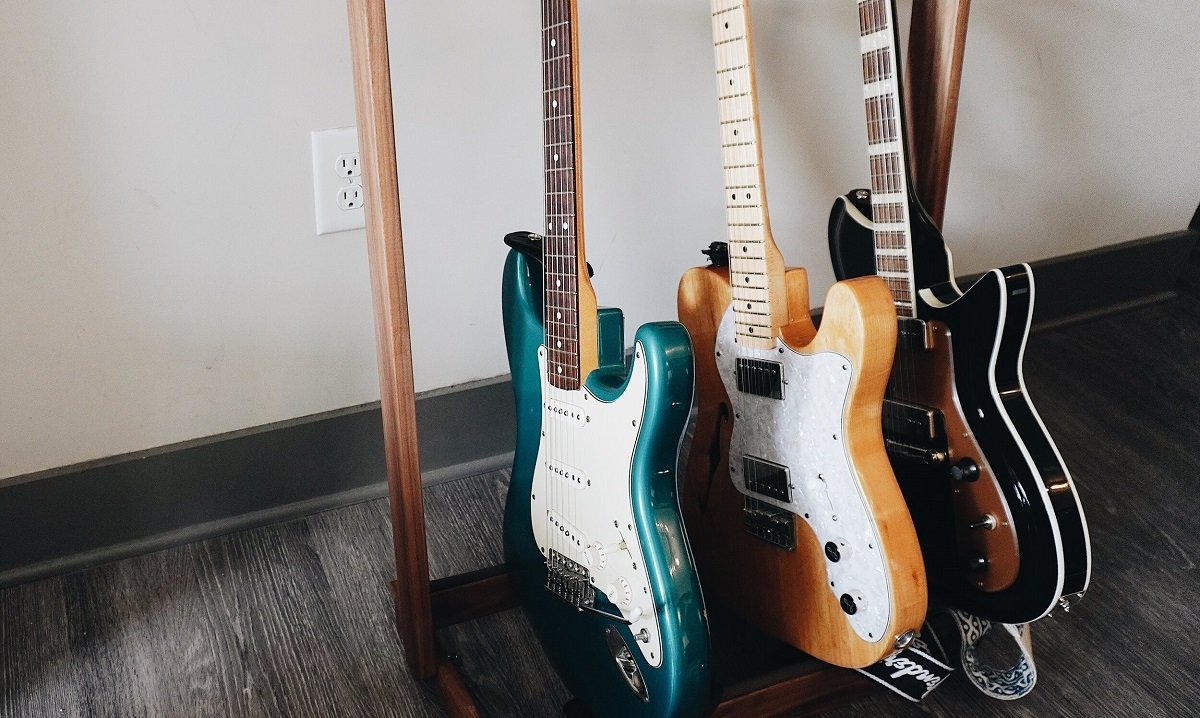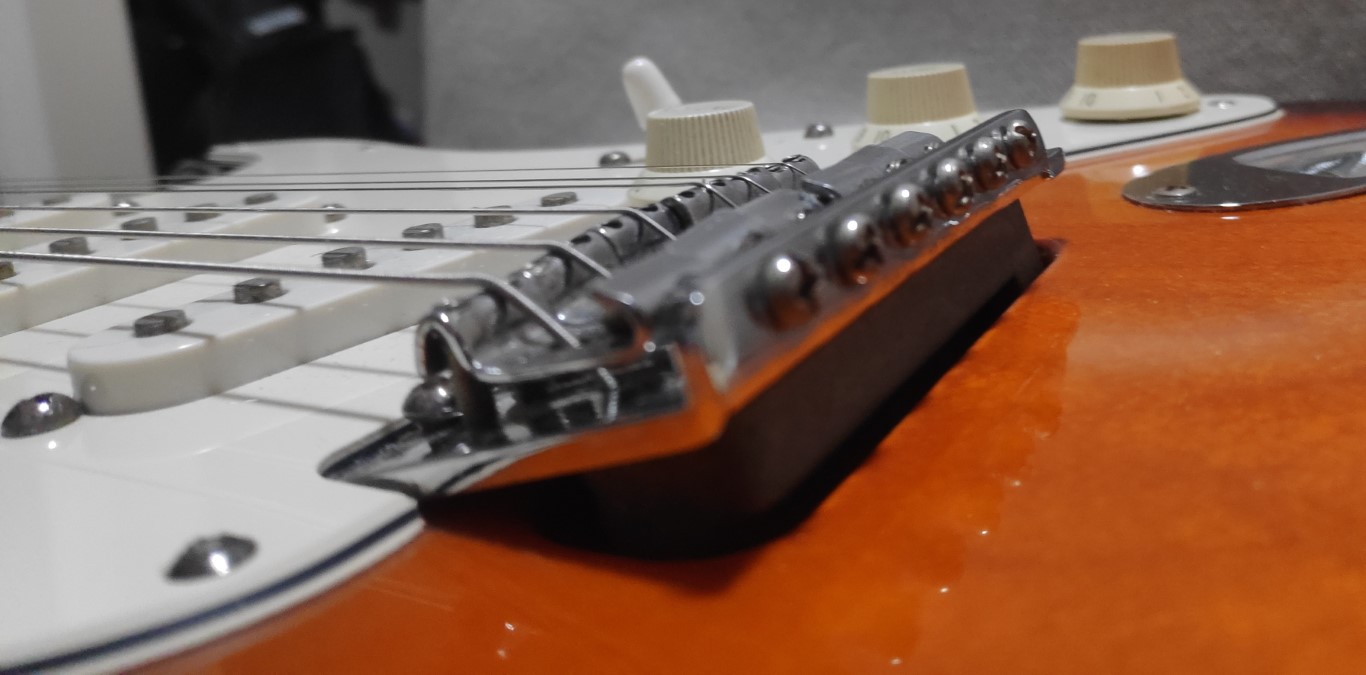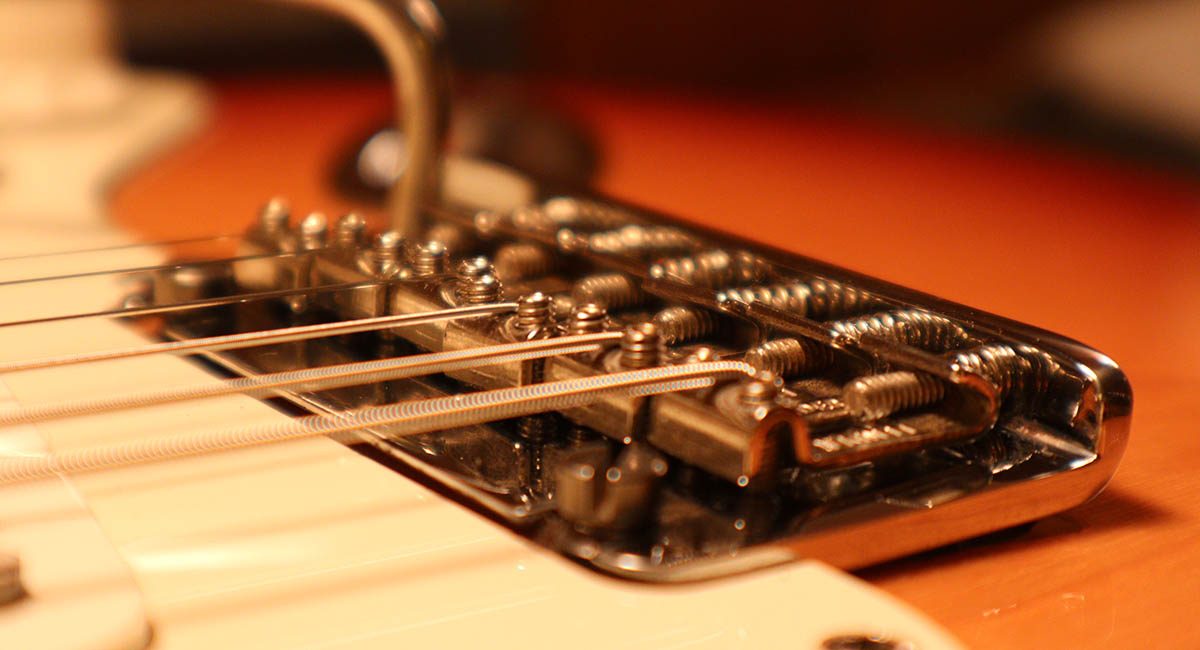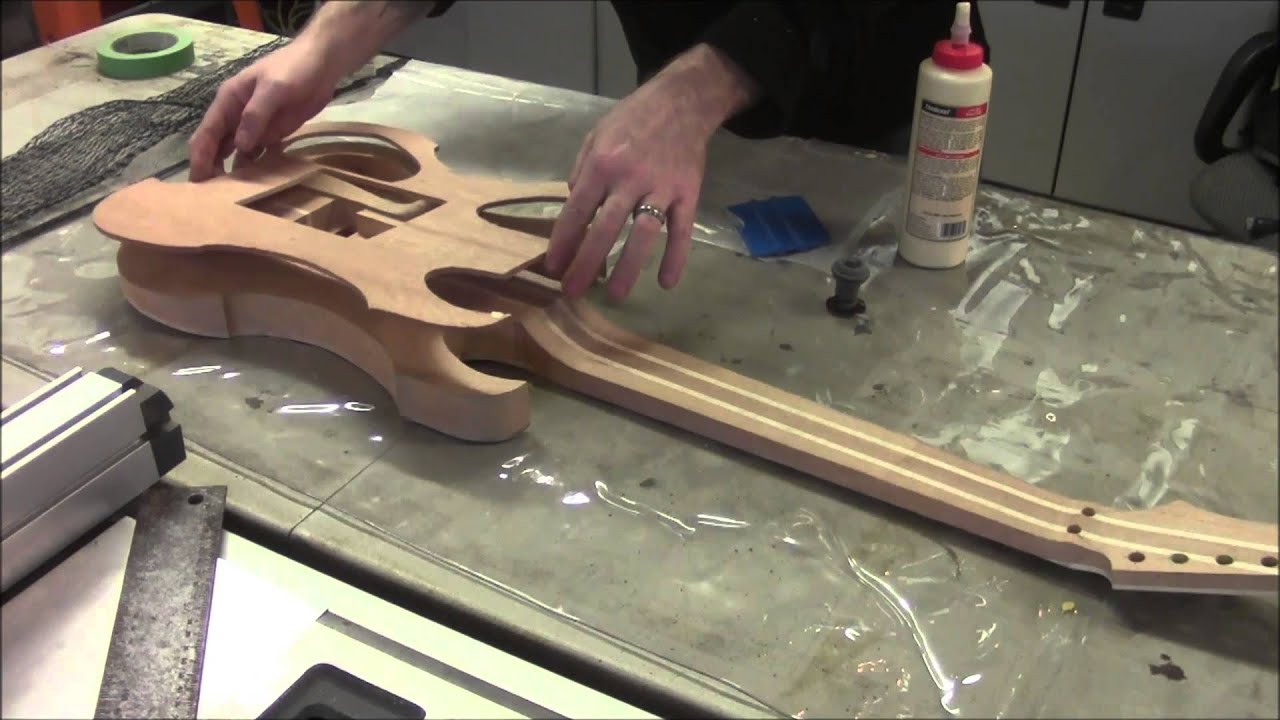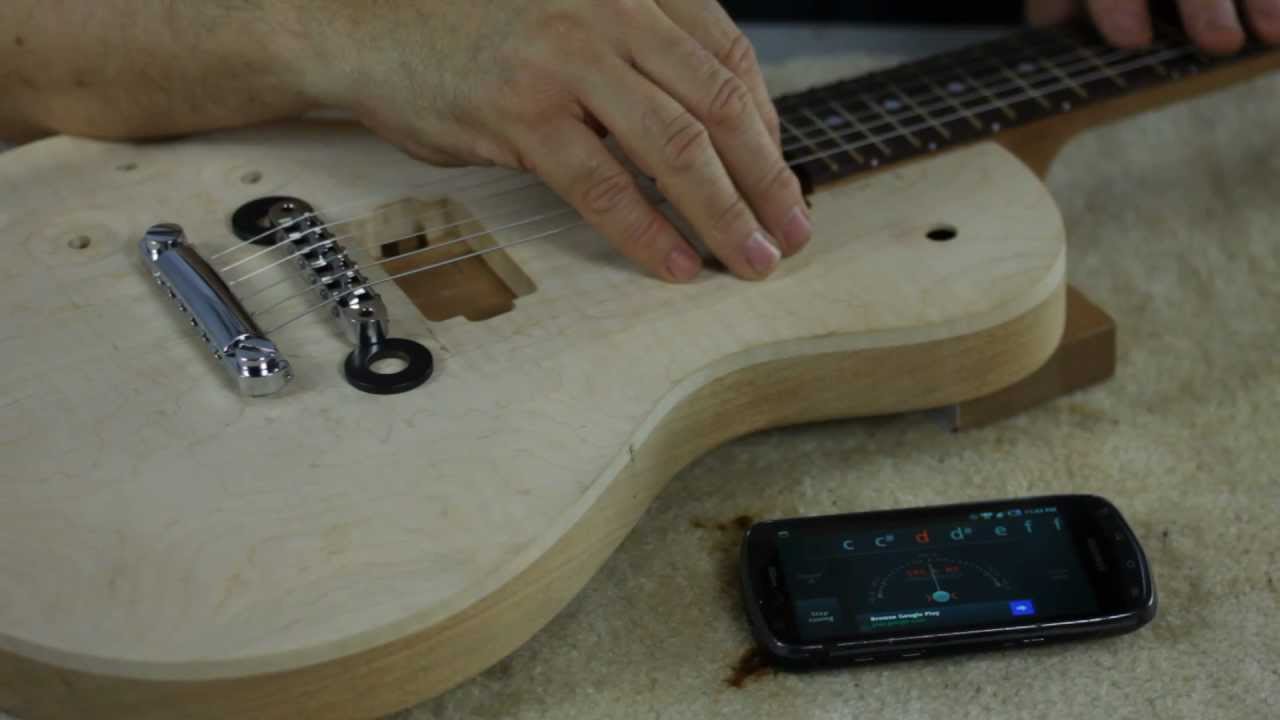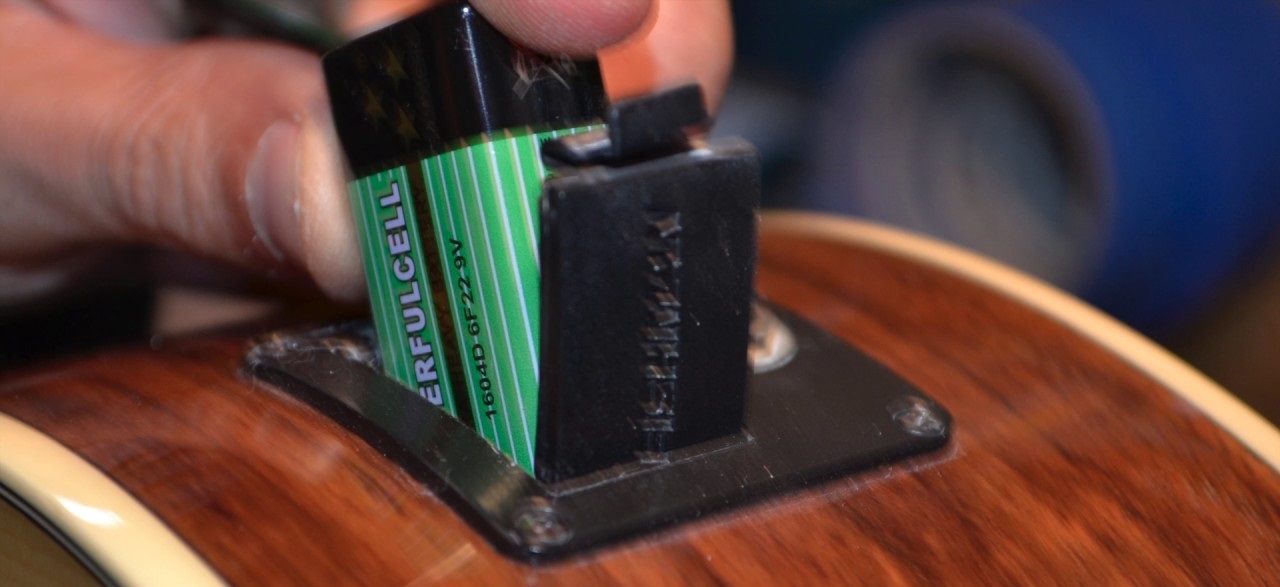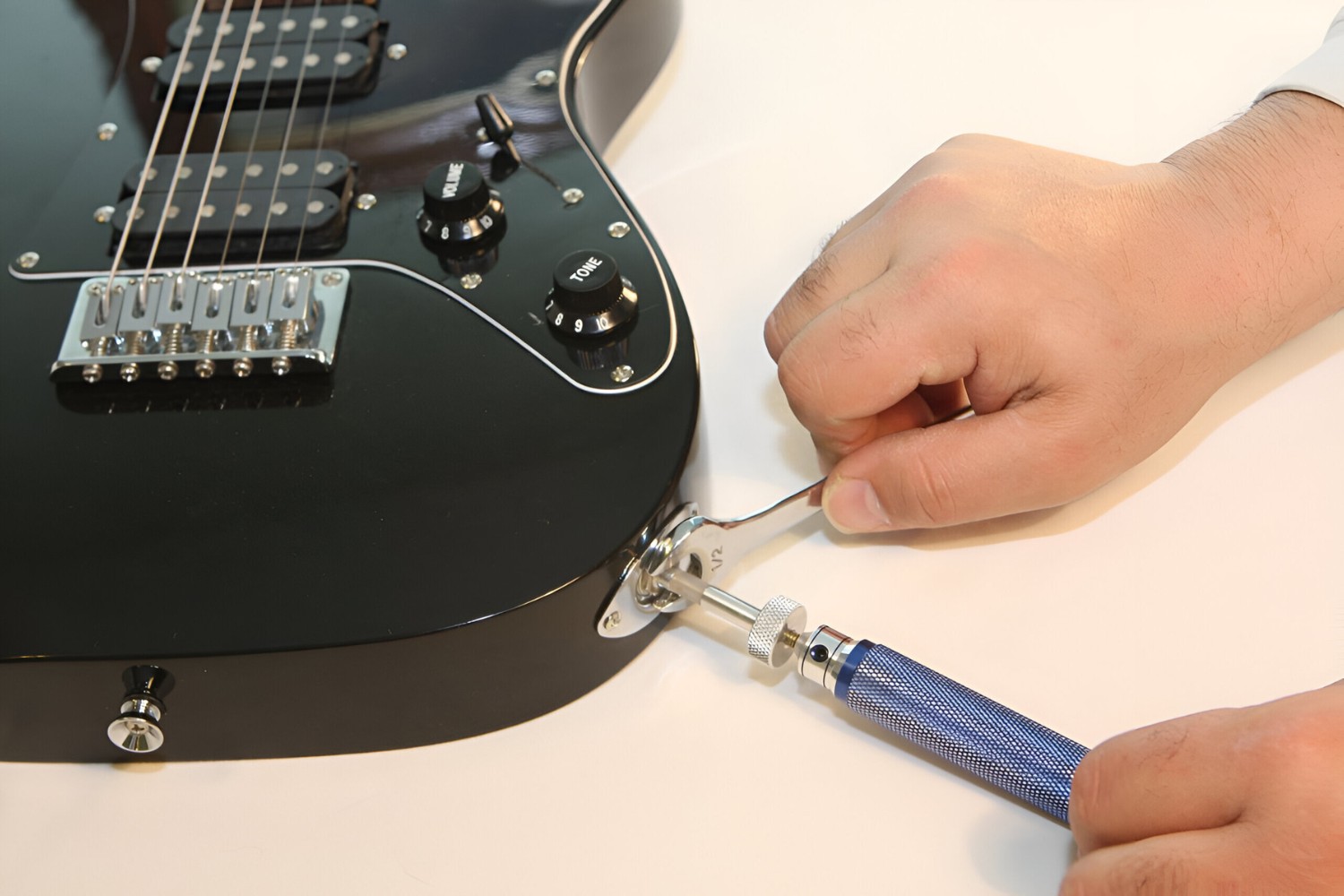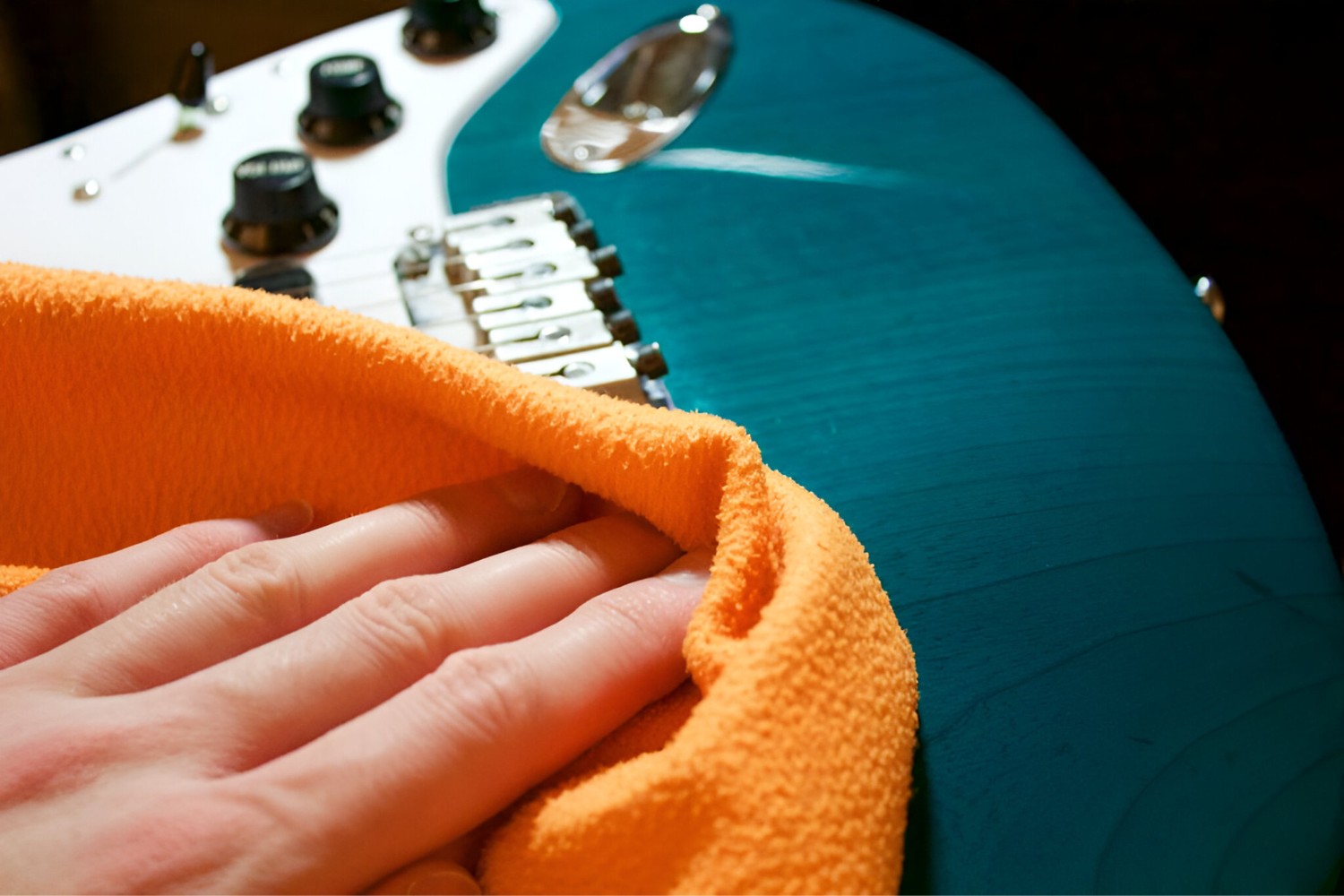Introduction
So, you've finally got your hands on an electric guitar, and you're ready to embark on an exciting musical journey. Congratulations! Owning an electric guitar opens up a world of sonic possibilities, but it also comes with the responsibility of proper care and maintenance. Whether you're a seasoned player or a novice, understanding how to take care of your electric guitar is crucial for preserving its sound, playability, and overall condition.
Electric guitars are not only musical instruments but also pieces of art, crafted with precision and care. They consist of various components, including the body, neck, fretboard, pickups, bridge, and electronics, all of which require attention to ensure optimal performance. By implementing a regular maintenance routine and following some essential care tips, you can extend the lifespan of your electric guitar and keep it in top-notch condition for years to come.
In this guide, we'll delve into the fundamental aspects of electric guitar care and maintenance. From cleaning and string care to fretboard maintenance and electronics care, we'll cover everything you need to know to keep your instrument in prime playing shape. Additionally, we'll explore the importance of proper storage and transportation, as well as the significance of truss rod adjustments and action settings in maintaining the playability of your electric guitar.
Whether you're a dedicated performer, a casual strummer, or an aspiring rock star, understanding how to care for your electric guitar is essential for preserving its tone, playability, and aesthetic appeal. So, let's dive into the world of electric guitar maintenance and ensure that your instrument remains a source of joy and inspiration for years to come.
Cleaning and Maintenance
Regular cleaning and maintenance are vital for preserving the appearance and performance of your electric guitar. Dust, dirt, and grime can accumulate on the instrument’s body, neck, and hardware, affecting its playability and aesthetic appeal. To keep your guitar in top condition, establish a cleaning routine that includes the following steps:
- Body Cleaning: Use a soft, lint-free cloth to wipe down the body of the guitar, removing any dust or smudges. For glossy finishes, a dedicated guitar polish can be applied sparingly to restore shine. Matte finishes can be cleaned with a damp cloth and dried immediately to prevent moisture damage.
- Hardware Maintenance: The metal hardware, including the bridge, tuners, and pickups, should be gently cleaned with a soft cloth to remove fingerprints and tarnish. A small amount of metal polish can be applied to restore the hardware’s luster. Be cautious not to use abrasive materials that may scratch the surfaces.
- Fretboard Care: The fretboard requires special attention. Use a damp cloth to clean the frets and a small amount of fretboard conditioner to hydrate the wood and prevent it from drying out. This process also removes accumulated dirt and oils from the fretboard.
- Electronics Maintenance: Inspect the electronic components for any loose connections or debris. Using compressed air, carefully remove any dust or particles that may have settled around the pickups, switches, or knobs.
By incorporating these cleaning and maintenance practices into your guitar care routine, you can ensure that your instrument remains visually appealing and functions optimally. Additionally, regular maintenance allows you to identify any potential issues early on, preventing them from developing into more significant problems.
Remember, a well-maintained electric guitar not only looks stunning but also delivers a superior playing experience, inspiring you to create music with passion and precision.
String Care
The strings of an electric guitar are crucial to its sound and playability. Proper care and maintenance of the strings not only contribute to the instrument’s tone but also enhance its longevity. Here are essential tips for preserving the quality and lifespan of your guitar strings:
- Regular Cleaning: After each playing session, wipe down the strings with a clean cloth to remove sweat, oils, and debris. This simple practice can prevent the accumulation of grime that can degrade the strings’ tone and playability.
- String Changing: Over time, strings accumulate dirt and lose their brightness. It’s recommended to change the strings regularly, depending on your playing frequency. Fresh strings not only sound better but also provide improved intonation and tuning stability.
- String Lubrication: Applying a small amount of string lubricant or conditioner can reduce friction and prolong the life of the strings. This is particularly beneficial for players who frequently bend or perform aggressive techniques.
- Storage Considerations: When not in use, it’s advisable to loosen the tension on the strings to reduce stress on the neck and bridge. This practice can prevent premature string fatigue and maintain the guitar’s setup.
By incorporating these string care practices into your guitar maintenance routine, you can ensure that your instrument delivers consistent tone and playability. Additionally, well-maintained strings contribute to a more enjoyable playing experience, allowing you to express your musical creativity with clarity and precision.
Fretboard Care
The fretboard is a critical component of an electric guitar, and its proper care is essential for maintaining playability and preserving the integrity of the instrument. Whether your guitar features a rosewood, maple, or ebony fretboard, implementing regular maintenance practices can ensure its longevity and optimal performance. Here’s how you can effectively care for your guitar’s fretboard:
- Cleaning: Use a soft, slightly damp cloth to remove built-up dirt and grime from the fretboard. Avoid using excessive moisture, and promptly dry the fretboard to prevent any potential damage to the wood.
- Conditioning: Applying a small amount of high-quality fretboard conditioner can hydrate the wood, preventing it from drying out and developing cracks. This step also revitalizes the fretboard’s appearance, enhancing its natural beauty.
- Fret Polishing: Gently polish the frets with a fine-grade steel wool or fret polishing cloth to remove tarnish and restore their shine. This process not only improves the fretboard’s aesthetics but also ensures smooth string bending and fretting.
- Inspecting for Wear: Regularly inspect the frets and fretboard for signs of wear, such as indentations or grooves. Addressing these issues promptly can prevent them from affecting the guitar’s playability and intonation.
By incorporating these fretboard care practices into your guitar maintenance routine, you can ensure that your instrument’s fretboard remains in optimal condition, facilitating effortless playability and maintaining its visual appeal. Additionally, a well-cared-for fretboard contributes to the overall comfort and enjoyment of playing your electric guitar, allowing you to focus on creating music with ease and confidence.
Electronics Care
The electronics of an electric guitar, including the pickups, switches, and potentiometers, play a pivotal role in shaping its sonic characteristics. Proper care and maintenance of these components are essential for ensuring consistent performance and tone. Here are essential tips for preserving the electronics of your electric guitar:
- Regular Inspection: Periodically inspect the electronic components for loose connections, dirt, or debris. Address any issues promptly to prevent them from affecting the guitar’s sound and functionality.
- Cleaning the Controls: Use a specialized electronic contact cleaner to remove dirt and oxidation from the potentiometers and switches. This process can restore smooth operation and prevent crackling or intermittent signal issues.
- Protecting the Pickups: Shield the pickups from excessive exposure to magnetic fields, which can interfere with their performance. When not in use, consider covering the guitar’s pickups with protective caps to prevent dust accumulation and potential damage.
- Humidity Control: Maintain a stable humidity level in the guitar’s storage environment to prevent moisture-related issues that can affect the electronics. Consider using a dehumidifier or humidifier to regulate the humidity as needed.
By incorporating these electronics care practices into your guitar maintenance routine, you can ensure that your instrument’s electronic components function reliably and contribute to its distinctive sonic character. Additionally, well-maintained electronics provide peace of mind, allowing you to explore a diverse range of tones and effects with confidence and precision.
Storage and Transportation
Proper storage and transportation are crucial for safeguarding the condition and performance of your electric guitar. Whether you’re a gigging musician or a home player, implementing the following practices can help protect your instrument from damage and environmental factors:
- Use a Quality Case or Gig Bag: Invest in a durable case or gig bag designed specifically for electric guitars. These protective accessories shield the instrument from impacts, temperature fluctuations, and dust accumulation during storage and transport.
- Store in a Stable Environment: When not in use, store your guitar in a stable environment with controlled temperature and humidity levels. Avoid exposure to direct sunlight, extreme temperatures, and high humidity, as these conditions can adversely affect the instrument’s wood and electronics.
- Secure Instrument Placement: When transporting your guitar, ensure that it is securely placed in the case or gig bag to prevent shifting or impact-related damage. Additionally, store the guitar in an upright position to minimize stress on the neck and headstock.
- Consider Detuning the Strings: For prolonged storage or transportation, consider detuning the strings to reduce tension on the neck and minimize the risk of string breakage or neck warping. However, it’s essential to retune the guitar and perform a setup before playing.
By adhering to these storage and transportation practices, you can safeguard your electric guitar from potential damage and ensure that it remains in optimal condition for years to come. Additionally, prioritizing the protection of your instrument demonstrates your commitment to preserving its value and playability, allowing you to enjoy countless hours of musical inspiration and creativity.
Adjusting the Truss Rod
The truss rod is a crucial component of an electric guitar’s neck structure, responsible for maintaining its straightness and providing stability. Over time, environmental factors and string tension can affect the neck’s relief, necessitating adjustments to the truss rod. Here’s a guide to effectively adjusting the truss rod of your electric guitar:
- Assessing the Neck Relief: Before making any adjustments, assess the neck relief by visually inspecting the curvature of the neck and measuring the gap between the strings and frets at the midpoint. This initial evaluation helps determine whether the truss rod requires tightening or loosening.
- Using the Correct Tool: Locate the truss rod adjustment nut, typically positioned at the headstock or inside the soundhole for guitars with an accessible truss rod. Use a suitable truss rod wrench or hex key that matches the size of the adjustment nut to avoid damaging the truss rod.
- Make Incremental Adjustments: When adjusting the truss rod, make small, gradual turns to avoid over-tightening or loosening. Typically, a quarter-turn at a time is sufficient to achieve the desired neck relief. Allow time for the neck to settle before reassessing the relief.
- Seek Professional Assistance if Unsure: If you are uncertain about adjusting the truss rod or encounter resistance during the process, it’s advisable to seek assistance from a qualified guitar technician. Improper truss rod adjustments can lead to neck damage and affect the guitar’s playability.
By mastering the skill of adjusting the truss rod, you can effectively maintain the optimal neck relief of your electric guitar, ensuring comfortable playability and consistent performance. Additionally, understanding the principles of truss rod adjustments empowers you to address neck-related issues promptly, allowing you to enjoy a well-set-up instrument that supports your musical expression and creativity.
Setting the Action
The action of an electric guitar, referring to the height of the strings above the fretboard, significantly influences playability, tone, and overall performance. Achieving the optimal action tailored to your playing style and preferences is essential for a comfortable and responsive playing experience. Here’s a guide to effectively setting the action of your electric guitar:
- Assessing the Current Action: Measure the string action at the 12th fret using a feeler gauge or ruler. This initial assessment provides a baseline for determining whether the action needs adjustment based on your playing comfort and string buzz levels.
- Adjusting the Bridge Height: Electric guitars equipped with adjustable bridges allow for individual string height adjustments. Using the appropriate tool, such as a screwdriver or Allen wrench, raise or lower the bridge saddles to achieve the desired action height for each string.
- Balancing String Height: Ensure that the action height is balanced across all strings to maintain consistent playability and intonation. Make incremental adjustments and regularly check the string height to achieve uniform action across the fretboard.
- Consider Nut Slot Height: Evaluate the nut slot depth to ensure that it facilitates smooth string movement and optimal string clearance. If necessary, consult a professional technician to address any nut-related action issues.
By mastering the skill of setting the action of your electric guitar, you can tailor the instrument’s playability to suit your playing style and preferences, facilitating effortless fretting, bending, and chord transitions. Additionally, achieving an optimal action height enhances the guitar’s tonal response and sustain, allowing you to explore a diverse range of musical expressions with confidence and precision.
Conclusion
Caring for an electric guitar is not only a responsibility but also a rewarding practice that enhances the instrument’s longevity, playability, and sonic capabilities. By incorporating regular cleaning and maintenance routines, paying attention to string care, fretboard maintenance, and electronics care, and prioritizing proper storage and transportation, you can ensure that your electric guitar remains in optimal condition for years to come.
Understanding the significance of adjusting the truss rod and setting the action empowers you to address specific playability-related concerns, allowing you to tailor the instrument to your unique playing style and preferences. Whether you’re a seasoned performer, a dedicated enthusiast, or a budding musician, the knowledge and skills gained from effectively caring for your electric guitar contribute to a fulfilling and inspiring musical journey.
Ultimately, the commitment to maintaining and caring for your electric guitar not only preserves its physical condition but also fosters a deeper connection with the instrument. As you invest time and effort into its upkeep, your guitar becomes more than just a musical tool—it becomes a trusted companion that resonates with your creativity and passion.
So, as you embark on this journey of guitar care and maintenance, remember that each cleaning session, adjustment, and inspection is a testament to your dedication to the craft of music. By nurturing your electric guitar with care and attention, you ensure that it continues to be a source of joy, inspiration, and musical expression for years to come.







